It’s 122 AD and you’re visiting North of Britannia. The Roman Emperor Hadrian Augustus is there, and you witness the aftermath of war between the roman army and the savage Picts. There, the Emperor orders for a wall to be built to separate the Pict tribes from the rest of England. Eighty Roman miles the wall stretches from coast to coast. The wall would be called Hadrian’s Wall and would stand and represent the Roman Empire for nearly 300 years.
Hadrian’s Wall is placed in the roll and write category of games, although there is no rolling, as the game uses cards incorporating a hand management mechanic with the combination of a tableau building type effect from crossing out boxes on the 2 big pieces of paper that the game focuses on. Hadrian’s Wall is one of the newer games from Garphill Games (Architects of the West Kingdom, Raiders of Scythia, Raiders of the North Sea) which was picked up by Renegade Games (who distribute many of Garphill’s Games). Renegade Games was able to send me a copy to check out, and I will say that this is, for me, the best type of _____ & write game I’ve played.
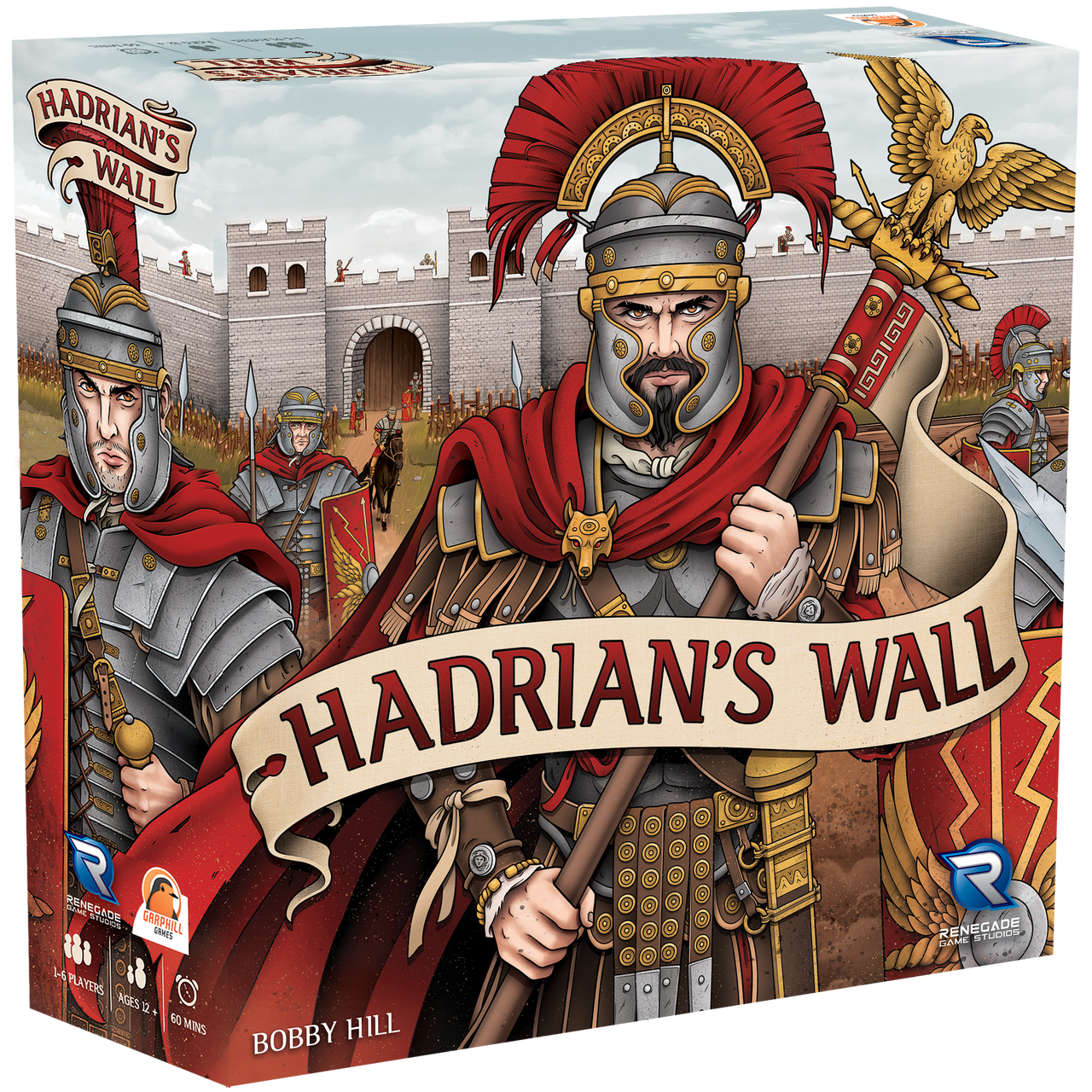
What’s In The Box?
50 wooden resources
18 wooden soldier meeples
24 wooden builder meeples
24 wooden servant meeples
24 wooden civilian meeples
6 player boards of 2 parts
48 fate cards
72 player cards, 12 per player
2 game pads with 200 sheets each
Roll and writes have mostly been designed as simple filler games, that although are fun to play, many lack depth and strategy. Hadrian’s Wall is not one of those games, this game has again come out to show that mechanisms can be used while still including a very strategic game that has many options. The first thing I noticed was the weight of box, it’s a very heavy game due to the thick pads of paper that come with it. Next, the wooden components are a nice addition as the publisher decided to include components that match their other games giving the feel of a more strategic Eurogame.
The first play can be a little overwhelming, but once you learn the concepts of how filling in one box leads you to another box to another, it will all fall into place. Soon you’ll understand how combos give you the excitement of progression in the game as you try to use your “resources” efficiently to cross off the best and most boxes to get you the most bang for your buck.
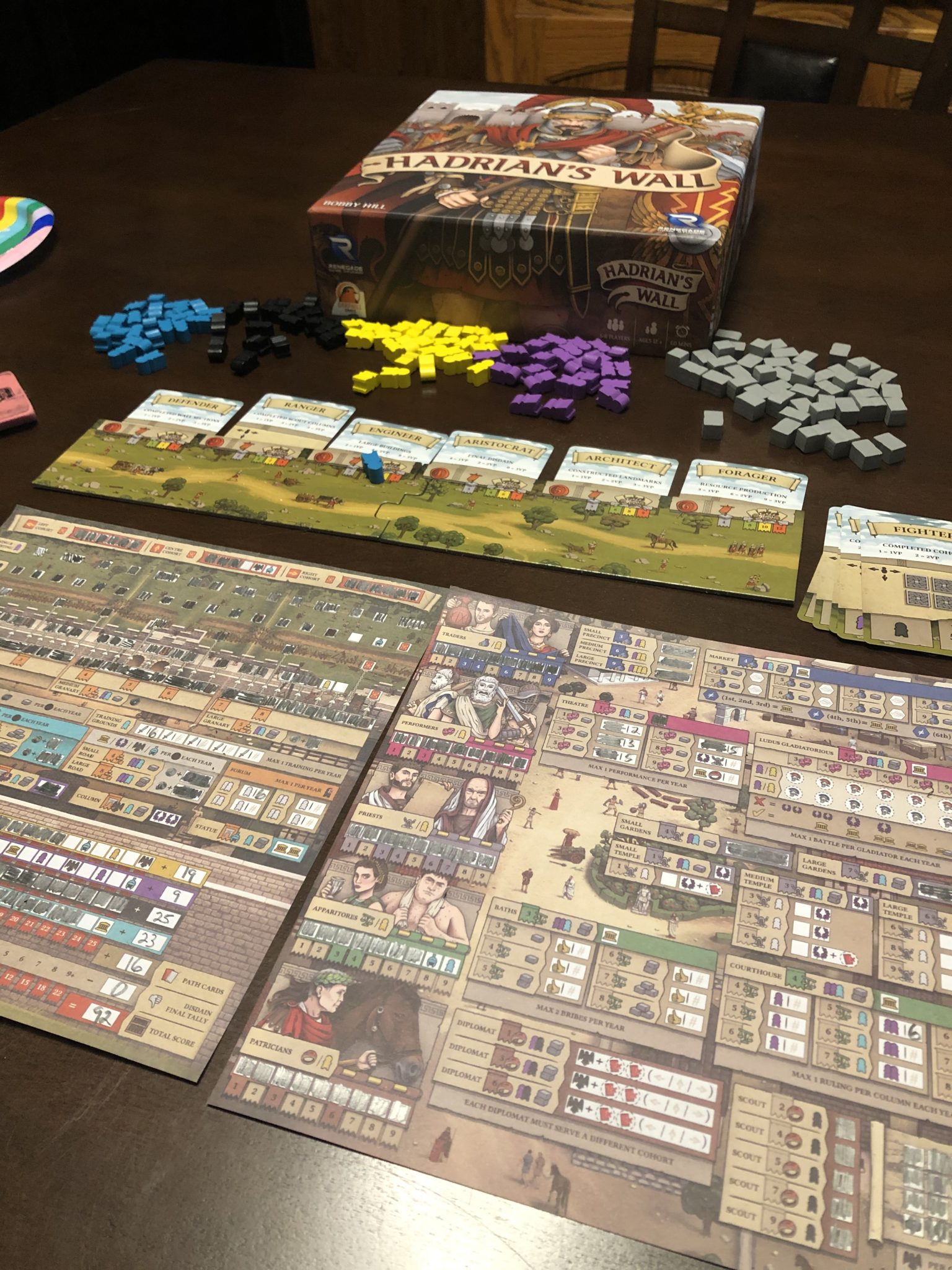
How’s It Play?
The game focuses on upgrading certain aspects of your city by developing the fort, defending its walls, and increasing the population’s attributes. The game plays over 6 years or rounds and whoever have the most points at the end wins.
Each round begins with a fate card which determines all the “resources” all players receive to use to make their fort better. Each meeple has its own focus and the grey blocks are used as a general resource in the game for various actions, although really all meeples could also be referred to as a resource. Each player will then draw the top 2 cards from their deck. Each of these cards lists 1 of 12 different end game scoring goals. Each player will choose one of the cards to place under their player board with the end game scoring goal shown on top and the other will be placed to the side and used as a prospect card. The prospect card will give that player additional resources and can also come into play with specific actions that players might take during the action phase. So, with 6 rounds, 6 of these cards will be chosen for end game scoring, and they will be different for each player. These will largely help to choose strategy and players will develop different areas due to these goals.
Players will also have areas on their sheets where they will develop structures that will permanently produce resources, civilians, builders, or specific attributes that will help score points.
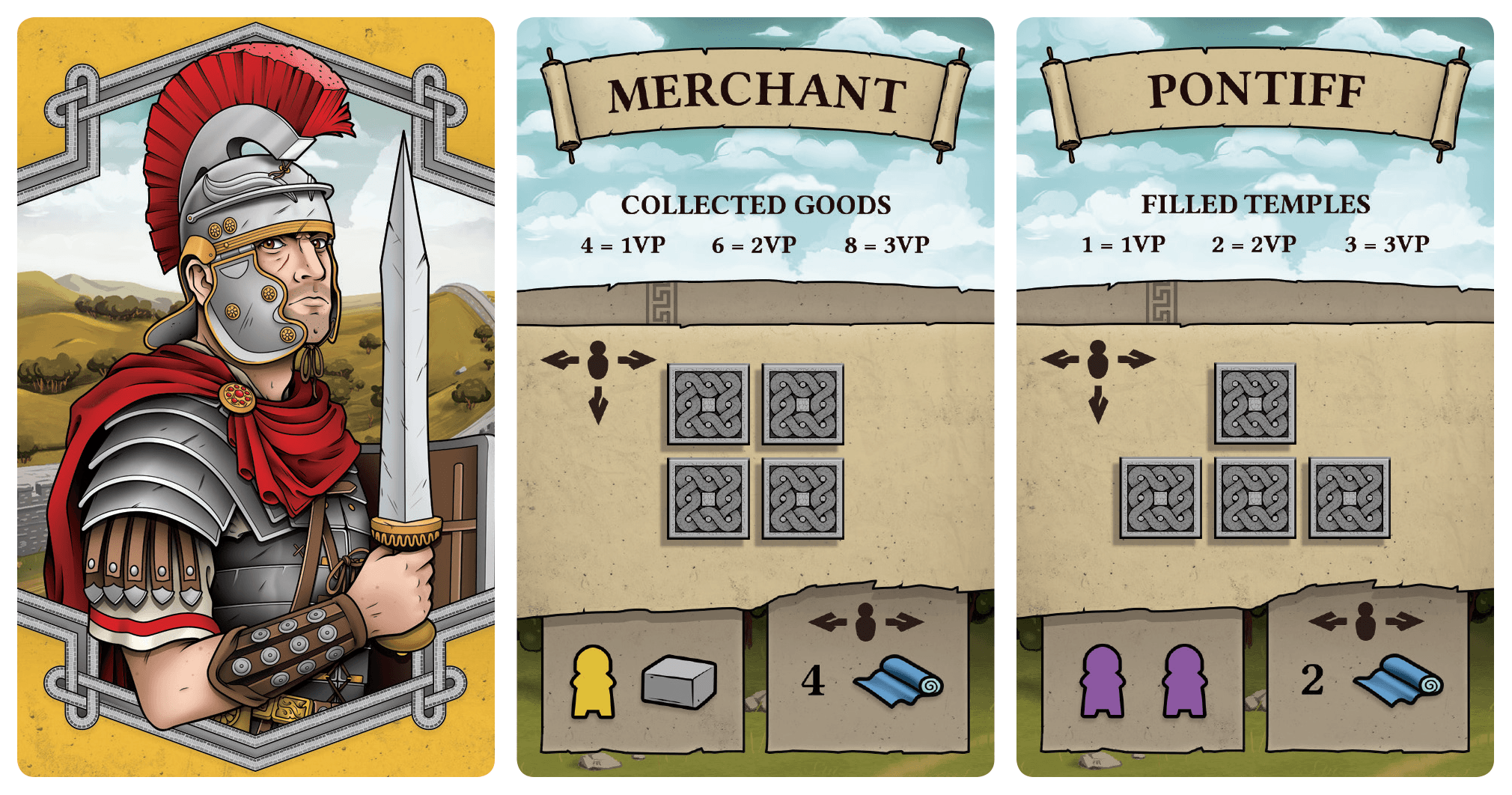
After players have gathered all their resources, players will all perform actions at the same time by filling in 1 or more boxes on their sheets. Each area lists the cost as to what it costs to color in a square. If they color in a square that lists a different resource, they will be able to take that from the supply and add it to their player board to use to cross off additional squares on the sheet. Players will discover combos as they spend and gain resources and open up their sheets to perform additional listed actions to gain attributes, or actions that will help produce, convert or use different meeples and resources to score points.
Players will want to use as many of these resources as they can because at the end of the round they will be discarded. After all players have used their resources for that round, a number of fate cards are drawn according to the level all players have decided to play (easy, medium, hard). This is to simulate the Picts attacking. The arrows on the top of the card will signify which of your cohorts they are attacking. If you were able to fill in squares in that cohort you can successfully defend the attack and gain valour, if not your gain disdain.
Players will repeat playing a new round gaining resources, spending them to perform actions, and then defending against attacks. This occurs for 6 years or 6 rounds and at the end of the 6th round, whoever has the most points from all their attributes and path cards subtracting points from their overall final disdain wins the game.
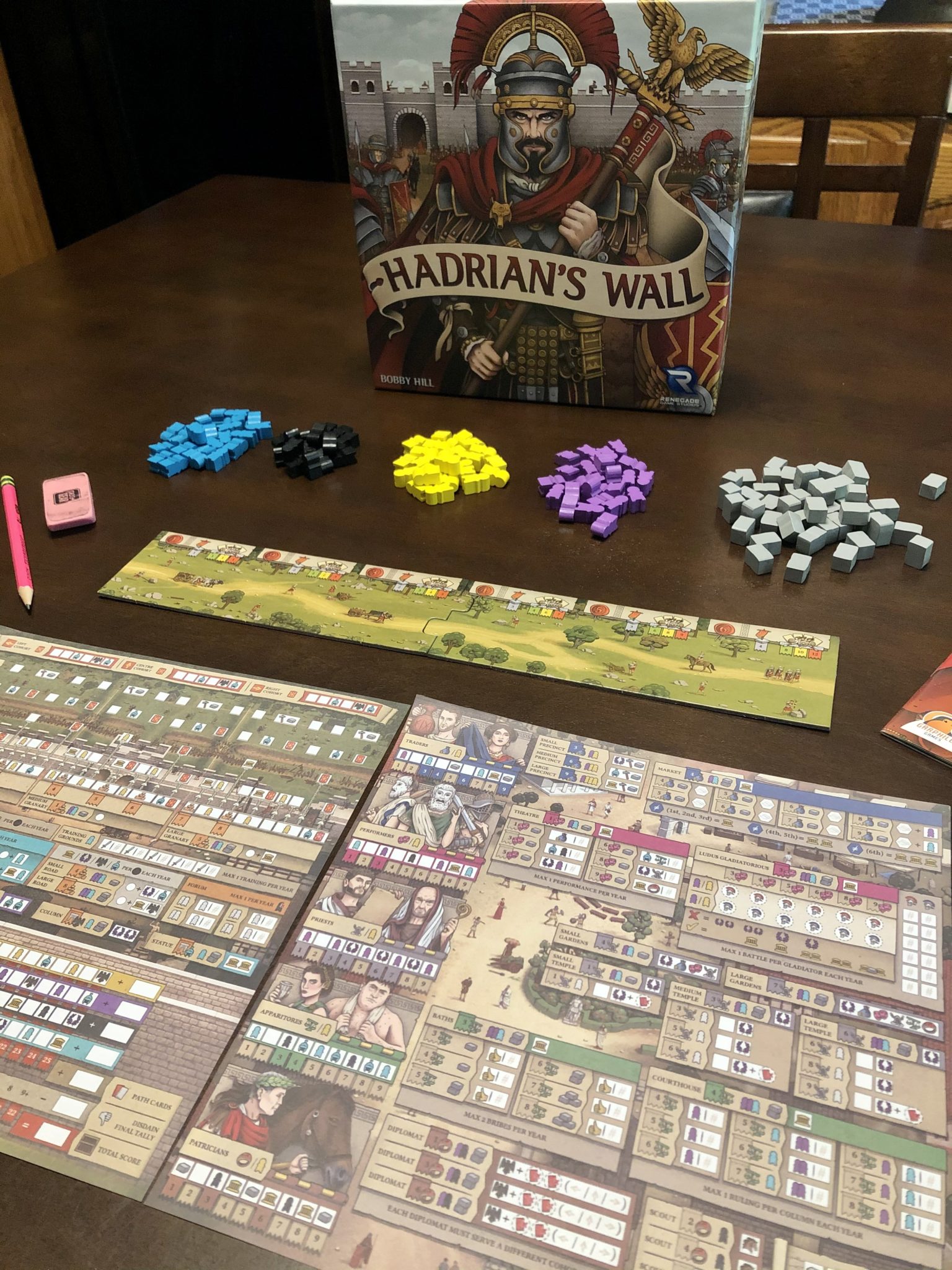
The Verdict?
It’s not a surprise to me why Hadrian’s Wall is ranked so well on boardgamegeek and why it has gotten such good reviews. Hadrian’s Wall focuses on those 2 sheets of paper that players use to play the game. Moat of the time in the game players will be studying their sheets trying to make combos to progress their boxes in different areas of their fort. Players have slightly different resources to use but players will all take different paths due to the path cards they choose to focus on.
In the first couple rounds players will be focused on building structures to produce them more resources each round, building a base for their fort and wall, deciding on what civilian class they would like to focus on and taking advantage of combos that will give them the desired resources to do all of that.
There are so many directions you can take playing this game. Everyone will end up building lots of the things shown on the main sheet of paper, but the civilian sheet is where many different paths will be seen. Some will use the theatre, train gladiators, build gardens or temples. Others might make underhanded deals at the baths, spend time in the courthouse to pass rulings, or instead of relying solely on the military, they can send out diplomats or even scouts to negotiate with the Picts. There is no best way that will work every game and discovering the added effects and bonuses when working in some of these areas over others is fun to uncover.
Hadrian’s Wall plays about the same with different player counts. The game can be played under an hour if you already know how to play. The game has a huge focus on marking off boxes on the 2 sheets of paper, yet they still include wooden components to make the game have a euro game feel that is appropriate for its weight. It’s a game that’s leading the industry in opening up areas that have not been discovered yet. I’m talking about a very strategic _____ & write that has hardly been produced previously. So all in all, definitely worth a play or two.
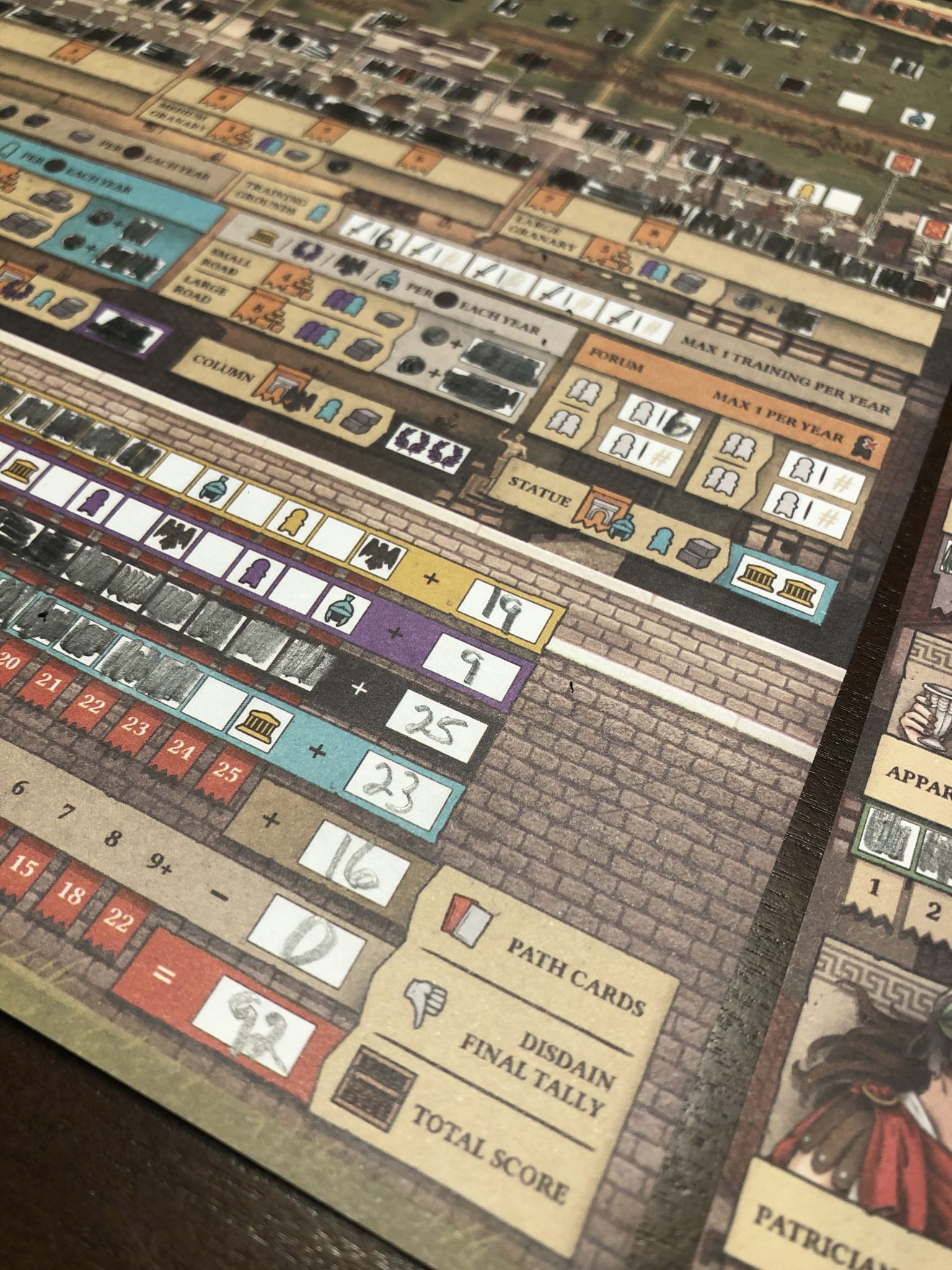
[rwp_box id=”0″]
You can pick up Hadrian’s Wall on Amazon, at the Garphill Games shop, at your FLGS. It retails for about $50.
Images Via Garphill Games
Have strong thoughts about this piece you need to share? Or maybe there’s something else on your mind you’re wanting to talk about with fellow Fandomentals? Head on over to our Community server to join in the conversation!

